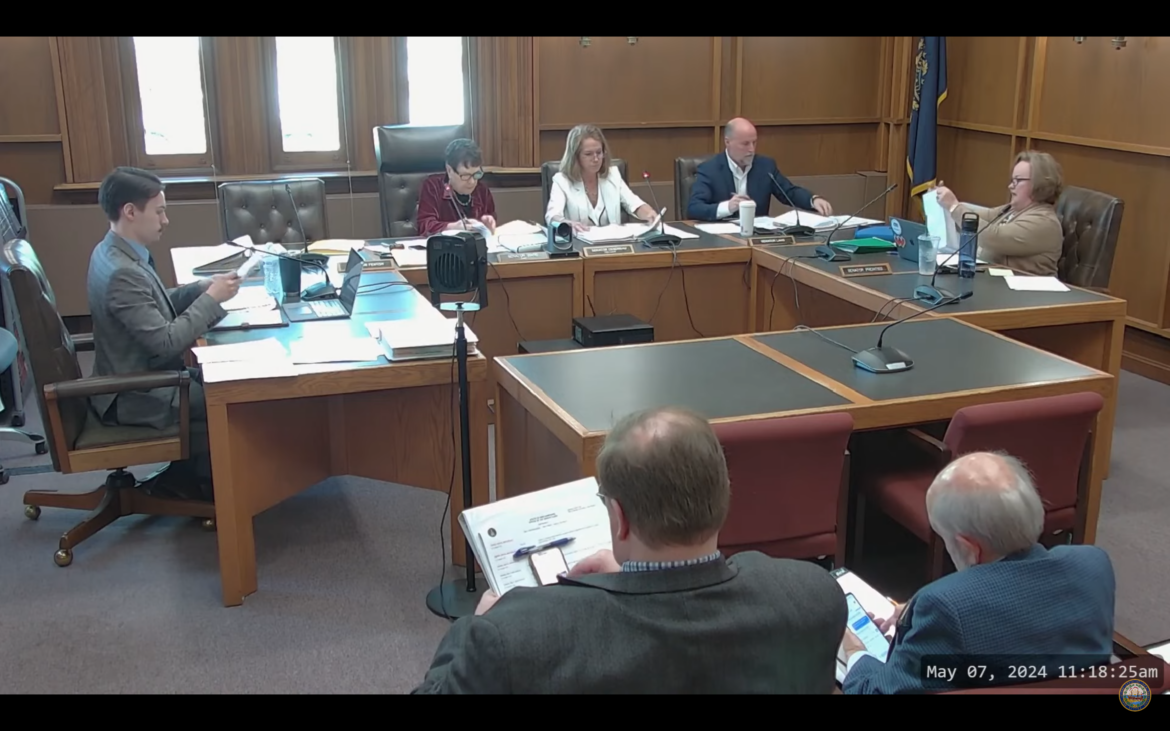By GARRY RAYNO, InDepthNH.org
CONCORD — The Senate Education Committee replaced the House’s Education Freedom Account expansion bill with its own plan Tuesday.
The change would lower the eligibility for the program from the House approved 500 percent to 400 percent, reducing the estimated increase in state costs to about $55 million from $70 million to $80 million annually.
The Senate’s version, Senate Bill 442, also reduces the amount of money the Children’s Scholarship Fund NH may retain for administering the program from 10 to 8 percent, extends the phase out grants to school districts losing students to the EFA program for another three years, requires the Department of Education to track the money for the grants and allows school districts to receive additional state adequacy aid for EFA students who take a course at a public school in grades seven through 12.
The House Education Committee recommended SB 442 be killed and the House agreed last Thursday killing the bill.
During the Senate Education Committee meeting Tuesday, Sen. Suzanne Prentiss, D-Lebanon, argued for including means testing annually for the program instead of the current law which determines income eligibility only once and the parent and their child are eligible until he or she graduates or leaves the program.
Prentiss said she appreciates extending the phase out grants, and lowering the amount the scholarship fund receives, but she is “looking for guardrails and means testing.”
She said she heard there have been discussions about annual qualifying for the program, and Sen. Timothy Lang, R-Sanbornton, said there has been no consensus so it is not in the amendment.
“We have to have criteria, every other public program has some form of means testing,” Prentiss said. “We need to put something in place not just keep raising the rates.”
Lang argued the EFA program is different because the state has compulsory education, that parents have to provide their child an education, while that is not true for health care or housing.
The program is just giving parents a choice on the best education for their child, he said.
Prentiss said that is the same argument for a different day, but noted a parent would be charged with abuse if they denied their child needed health care.
“These are public dollars,” Prentiss said. “This can go on forever and ever and (have an) increase in income and there is no means test, but they can continue on in a system we are funding just like every other program public money goes into.”
She noted private schools or religious schools are receiving a great amount of public money from the program.
The vote on House Bill 1665 in committee was 3-1 for the amendment and then 3-1 for the bill as amended down party lines.
The EFA program provides an average per pupil grant of $5,255 to about 4,700 students this school year, up from the 1,600 students when the program began three years ago when the average grant was $4,952.
Increasing the eligibility cap to 500 percent of the federal poverty level would cap the income of a family of four at $156,000 and $102,000 for a parent and child household based on federal 2024 figures.
The current rate of 350 percent limits income to $109,200 for a family of four and $71,540 for a family of two.
At the 400 percent threshold, a family of two would be able to earn up to $81,760 and a family of four up to $124,800.
The federal government estimates the median income in New Hampshire for a family of four is $133,447.
The state money for the program comes from the Education Trust Fund, which also pays for state adequacy grants, some special education and school building aid, and other education items.
The fund currently has a surplus of about $212 million.
“Public dollars belong in public schools. Period,” said Megan Tuttle, President of the NEA — NH. “Any vote to expand the state’s unaccountable voucher scheme – yet again – is a vote to divert even more taxpayer funds from public schools, which nearly 90 percent of Granite State students attend.”
The controversial program was sold as an alternative for lower income parents to send their child to a more appropriate educational environment for their learning abilities other than public schools.
However, about 75 percent of the students in the program were not in public schools when they applied for the state grants and instead were in private or religious schools or in homeschooling.
The increase in eligibility has not significantly increased the number of students leaving public schools but has increased subsidies to attend private and religious schools or homeschooling programs.
States that have no eligibility cap have seen the program explode with non-public school students seeking grants that have nearly bankrupted Arizona and put Ohio public schools in peril.
When the program was first proposed in New Hampshire there was no income cap, but when the program was first approved as part of the 2021-2022 biennial budget it included a 300 percent of poverty limit, which was raised to 350 percent for the current school year.
Critics of the program say it lacks academic accountability and financial transparency with the Children’s Scholarship Fund based in New York City, so financial reporting is for the entire organization not what is spent on the New Hampshire program.
However, the majority of the Legislature has refused to approve major changes to the program beyond increasing the income eligibility.
The amended House Bill 1665 needs to be acted on by the Senate next week in order to go to the Senate Finance Committee for review and final action by May 23.
Garry Rayno may be reached at garry.rayno@yahoo.com.






